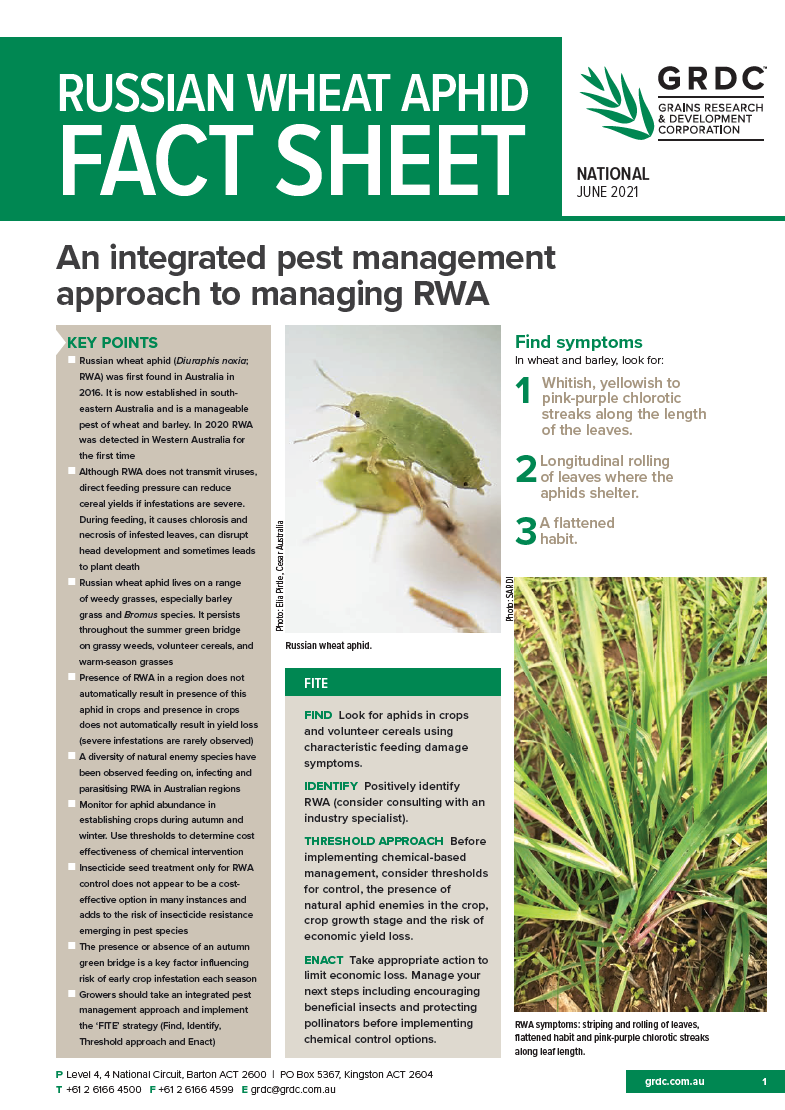Russian wheat aphid fact sheet
Russian wheat aphid fact sheet
Published: 17 Jun 2021
Key points
- Russian wheat aphid (Diuraphis noxia; RWA) was first found in Australia in 2016. It is now established in southeastern Australia and is a manageable pest of wheat and barley. In 2020 RWA was detected in Western Australia for the first time
- Although RWA does not transmit viruses, direct feeding pressure can reduce cereal yields if infestations are severe. During feeding, it causes chlorosis and necrosis of infested leaves, can disrupt head development and sometimes leads to plant death
- Russian wheat aphid lives on a range of weedy grasses, especially barley grass and Bromus species. It persists throughout the summer green bridge on grassy weeds, volunteer cereals, and warm-season grasses
- Presence of RWA in a region does not automatically result in presence of this aphid in crops and presence in crops does not automatically result in yield loss (severe infestations are rarely observed)
- A diversity of natural enemy species have been observed feeding on, infecting and parasitising RWA in Australian regions
- Monitor for aphid abundance in establishing crops during autumn and winter. Use thresholds to determine cost effectiveness of chemical intervention
- Insecticide seed treatment only for RWA control does not appear to be a costeffective option in many instances and adds to the risk of insecticide resistance emerging in pest species
- The presence or absence of an autumn green bridge is a key factor influencing risk of early crop infestation each season
- Growers should take an integrated pest management approach and implement the ‘FITE’ strategy (Find, Identify, Threshold approach and Enact)
Download PDF
Region: National
GRDC Project Code: UOA1805-018RTX,

